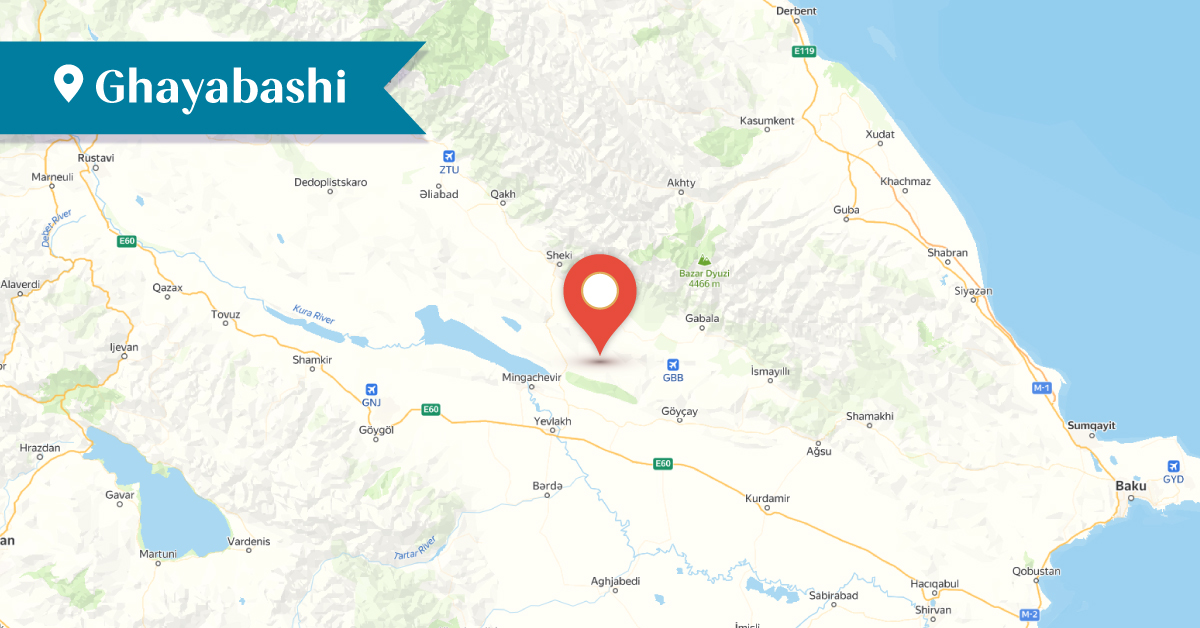2025
2025
2024-12-09

Ghayabashi was an Armenian-inhabited village located 60 km southeast of the city of Shaki. Like many other Armenian-inhabited villages in the region, it was depopulated in the mid-18th century due to repressions by Haji Chalabi Khan of Shaki.
In the early 19th century, the village was repopulated by Armenians who had migrated from the Khoy district of Perskahayq. This was recorded on the wall of the village's St. Stephen Church.
Those from Khoy,
Who came to the land of Shaki,
In the Armenian year 1256, and in the year of our Lord 1807,
And the settlement of this village, Ghayabashi,
Was in the Armenian year 1273, and in the year of our Lord 1824.
In 1886, the village of Ghayabashi was entirely Armenian-inhabited, with a population of 1,438. During the visit of Bishop Makar Barkhutaryants in 1888, the village had 226 households with Armenian residents (789 males and 649 females). By 1914, Ghayabashi remained fully Armenian-inhabited, with a population of 3,138.
The village was home to a one-class boys' school named after St. Nerses. The population of Ghayabashi was massacred in 1918 during the invasion of Turkish forces and Musavatists into the region.
The Surb Stepanos Church of the village has not been preserved. It was renovated in 1830 and later underwent major restoration in 1890. This was inscribed on the church wall:
Renovated through the efforts of the people,
This St. Stephen Church of the village of Ghayabashi,
In the year 1830, April 10.
During the visit of monument specialist Samvel Karapetyan, the Armenian cemetery of the village was still preserved. At the same time, remnants of an old settlement known as "Shinategh" and an ancient Armenian cemetery were found on the southern outskirts of Ghayabashi. Currently, all traces of Armenian heritage in the village are destroyed.
The village is still called Ghayabashi and is now inhabited by Azerbaijanis.
Bibliography
Barkhutaryants M., Land of Aghvank and its Neighbors: Artsakh, Yerevan, 1999.
Karapetyan S., The Armenian Lapidary Inscriptions of Aghvank Proper, Yerevan, 1997.